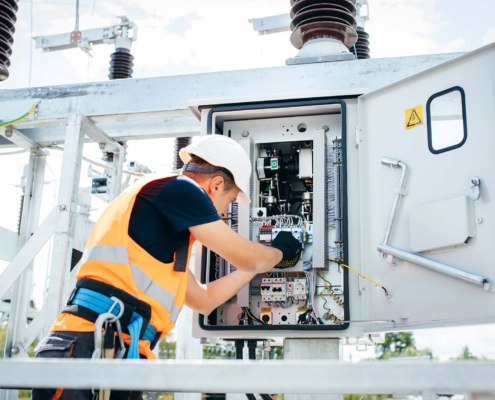 https://agservicestx.com/wp-content/uploads/2025/08/Why-Preventative-Industrial-Plumbing-Maintenance-is-Critical-for-Facilities.jpg
1250
2000
AbstraktMarketing
/wp-content/uploads/2021/02/cropped-AG-Piping-01-300x30m-300x300.png
AbstraktMarketing2025-08-14 15:25:332025-10-07 20:22:57Why Preventative Industrial Plumbing Maintenance is Critical for Facilities
https://agservicestx.com/wp-content/uploads/2025/08/Why-Preventative-Industrial-Plumbing-Maintenance-is-Critical-for-Facilities.jpg
1250
2000
AbstraktMarketing
/wp-content/uploads/2021/02/cropped-AG-Piping-01-300x30m-300x300.png
AbstraktMarketing2025-08-14 15:25:332025-10-07 20:22:57Why Preventative Industrial Plumbing Maintenance is Critical for FacilitiesHow Can I Fix Hot and Cold HVAC Spots?
As a business owner or property manager, you’re probably no stranger to hot and cold spots throughout your building. Some rooms are stifling to the point of being a huge distraction for employees. Other rooms are extremely cold—which is equally distracting. The question is, how do you fix these hot and cold spots and finally achieve even heating and cooling throughout your building?
Why Is My Commercial Building Dealing With Hot and Cold HVAC Issues?
Hot and cold HVAC spots are a common issue in most commercial spaces. These temperature variations occur when certain areas of the building are not receiving adequate heating or cooling. This can lead to discomfort for occupants and can even have negative effects on energy efficiency. Understanding why hot and cold spots occur and working with an HVAC contractor can prevent this issue from happening.
One of the primary reasons for hot and cold HVAC spots is poor air circulation. This can be due to a variety of factors, including outdated HVAC systems, improper ductwork design, or even poorly placed vents. In some cases, there may be inadequate insulation or weather stripping around windows and doors, which can allow hot or cold air to infiltrate the building.
Building orientation, sunlight, and heat sources like electronics can also affect the temperature balance of the space. But truth be told, the answer is…it depends. It’s impossible to pinpoint what’s causing hot and cold spots in your building without first understanding some of the potential causes and evaluating your building’s specific strengths and weaknesses.
13 Ways to Fix Hot and Cold HVAC System Problems
There are several ways to address issues and rescue your air conditioner from hot and cold spots. One of the most effective ways is to work with an experienced HVAC contractor who can identify the underlying cause and provide a solution.
Here are some specific solutions that will be on the table when an HVAC contractor evaluates your property:
1. Conducting a Thorough Assessment of the HVAC System
An HVAC contractor can perform a detailed analysis of your HVAC system to identify any issues that may be contributing to hot and cold spots. This can include inspecting the ductwork, insulation, and placement of vents and registers. Based on this assessment, the contractor can recommend the best course of action to improve the air circulation and temperature balance in the building.
2. Upgrading the HVAC System
If the HVAC system is outdated or inefficient, a contractor can recommend upgrades or replacements that will improve performance. This may include replacing old air conditioning units or furnaces, installing more efficient systems, or upgrading the ductwork to improve air circulation.
3. Installing Zoning Systems
Zoning systems are an effective way to control the temperature in different areas of the building. This allows more precise control over the heating and cooling in each room or zone, which can prevent hot and cold HVAC spots. An HVAC contractor can install a zoning system that meets the specific needs of the building and its occupants.
4. Inspecting and Repairing Weather Stripping and Insulation
Inadequate insulation or weather stripping around windows and doors can allow hot or cold air to infiltrate the building. An HVAC contractor can inspect the building’s insulation and weather stripping and make necessary repairs or replacements to prevent air leaks.
5. Providing Regular Maintenance and Cleaning of the HVAC System
Regular maintenance and cleaning of the HVAC system prevent issues that can lead to hot and cold spots. This includes changing air filters, cleaning ducts and registers, and performing routine inspections of the system.
6. Installing Fans
Fans improve air circulation in the building and prevent hot and cold spots. By keeping the air moving, fans can distribute warm or cool air more evenly throughout the space.
CTA: Dallas gets hot, and the last thing your business needs to deal with is HVAC airflow issues.
7. Using Window Treatments to Control Sunlight
Sunlight can be a major cause of hot spots. By using window treatments such as blinds or shades, building owners can control the amount of sunlight that enters the space and prevent areas from becoming too hot.
8. Installing Automatic Sensors and Timers
Automatic sensors and timers can help regulate the temperature in different areas of the building. For example, sensors can detect when a room is too hot or too cold and adjust the HVAC system accordingly. Timers can be used to control the temperature during certain times of the day or week, such as reducing heating or cooling during off hours or weekends when the building is not in use.
9. Encouraging Energy-Efficient Behaviors Among Occupants
Building occupants can also play a role in preventing hot and cold spots. Encouraging energy-efficient behaviors such as turning off electronics when not in use, closing windows and doors to prevent air leaks, and avoiding blocking vents can all improve the performance of the HVAC system and prevent hot and cold spots.
10. Using a Programmable Thermostat
A programmable thermostat allows building managers to set temperature schedules and control the HVAC system from a central location. This prevents hot and cold spots by ensuring that the temperature is consistent throughout the day.
11. Using Radiant Heating or Cooling
Radiant heating or cooling systems are an effective alternative to traditional HVAC systems. By using radiant panels or tubing in walls or ceilings to distribute hot or cool air, these systems provide a more even temperature throughout the building.
12. Installing Insulation Barriers
In some cases, temperature imbalances can be caused by differences in temperature between adjacent rooms or floors. Insulation barriers between these areas help prevent hot or cool air from migrating between them.
13. Implementing an Energy Management System
An energy management system monitors and optimizes the energy use of a building’s HVAC system. By using real-time data to identify areas of high energy consumption, building managers can make better informed decisions to reduce energy costs and prevent hot and cold spots.
Let A&G Services Fix Your Hot and Cold HVAC Issues
At A&G, we’re more than just a commercial HVAC company. We’re a team of professionals that offers years of experience and competitive pricing. We work in collaboration with onsite engineers to make sure every step of the process works for you.
If your Dallas-Fort Worth business needs preventative HVAC maintenance, our trained HVAC technicians are ready to help. Contact us today to learn more!






